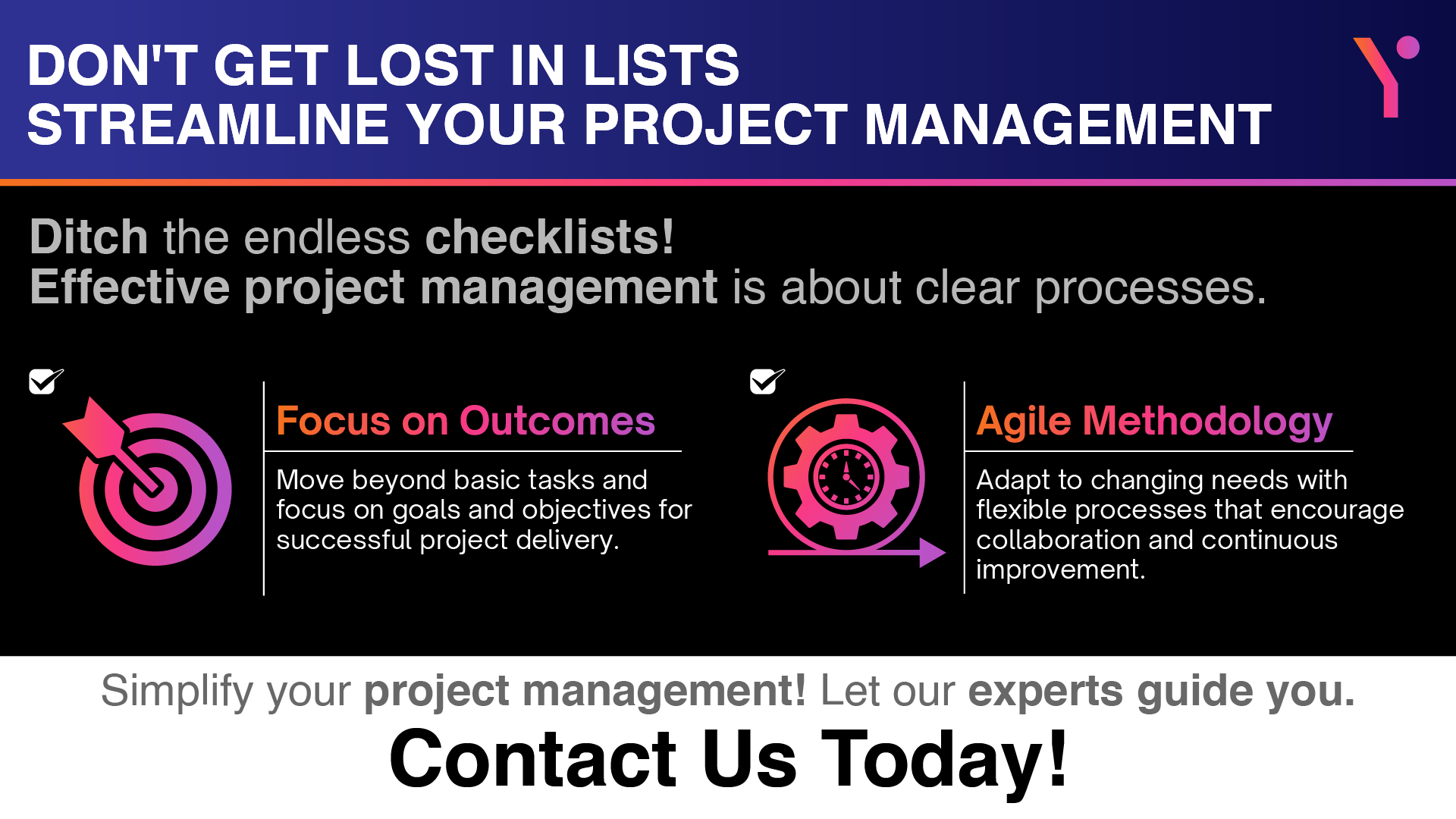Introduction
Are you going through project-related chaos? Well, Project Integration Management comes to your rescue. It can unite every project part, such as budgets and schedules. This ensures that I.T. and business work together. As a result, you can turn your ideas into reality, significantly increase project success chances and deliver real value.
Project management can be complicated if not done correctly. Even people who have been doing project management for years or even decades sometimes feel overwhelmed with project management especially those associated with leading financial services software solutions, tech firms, and other organisations. However, the fundamentals of project management are not that complicated.
This is where this blog comes to your rescue, as it offers a highly beneficial project management checklist. This easily understandable checklist outlines phases that will guide your project towards successful completion. Today’s renowned companies, such as those offering tech solutions or ERP software development services, have already made good use of a similar project management checklist.
Note that this is a general framework that you are free to adapt to meet the requirements of your project. Remember that there is no set project management checklist template anywhere.
So, let’s begin!
I. Project Initiation: Building the Foundation
It is important to understand the purpose of the project. This is where you lay the groundwork for a reliable building. This is why the project initiation phase is often considered the foundation of the project and one of the most important points on any project management checklist.

Defining Project Objectives & Goals
A successful project always starts with a properly defined goal. Start by answering these questions:
- What is the problem being solved?
- What do we want to achieve?
Leading technology companies, such as Microsoft and Google, emphasise SMART goals. Your goals/objectives must be Specific, Measurable, Achievable, Relevant, and Time-Bound (SMART).
For instance:
If you are to launch a social media campaign to promote brand awareness, your SMART objective could be to enhance brand-related awareness by 25% on Facebook, Instagram, and LinkedIn within the next six months, measured by engagement metrics and follower growth.
Identifying Important Stakeholders
Most projects require a team. Various stakeholders come together to ensure that the project is completed within the timeframe. These stakeholders may be external, such as clients and investors, or internal, such as team members and management. The identification of key stakeholders is often done while compiling the project management checklist.
Action:
Make a stakeholder register that clearly defines the expectations, roles, and preferred communication methodologies for the project. For instance, Microsoft is known to emphasize the critical nature of stakeholder engagement across the project lifecycle.
II. Project Planning: Mapping the Journey
By now, you should have a clear understanding of the project. Next is accurate mapping of the journey.
Creating Work Breakdown Structure
In simple words, a work breakdown structure (WBS) is a hierarchical breakdown of the project into small and easily manageable tasks. A complex project can be divided into various phases and milestones, so it is easier for the team to follow as well for progress tracking.
Tool:
Make use of project management tools or mind-mapping software to visualize the WBS. Your goal should be to include tools in your project management checklist template your team is familiar with. Also, look for tools used by various tech giants, like Google.
Estimating Task Dependencies & Durations
Allocate an estimated time to the tasks/phases in your WBS. Identify the dependencies between the tasks. For instance, do we need to conclude Task X prior to initiating Task Y?
Technique
Feel free to use the three-point estimate method, which considers the optimistic, pessimistic, and estimated task duration.
The Project Schedule Creation
One done with the timelines, create a reliable, robust, and flexible project schedule. Consider utilizing popular tools such as Gantt charts, as they can present an excellent visual representation of a given project’s timeline, highlighting deadlines and milestones.
Several companies offer educational services and project schedule creation has offered them immense aid with their operations.
Best Practice
Let’s look at Google’s example. It is well-regarded for its highly innovative project management practices and makes use of tools such as Google Sheets for tracking and scheduling progress. III. Project Execution: Taking Actions
This is where the real stuff happens. So far, you have established your goals/objectives and mapped out your plan. This is where you execute. Remember that the right execution depends on effective resource allocation and clear communication. Make sure your project management checklist has these factors defined properly.
The Establishment of a Project Management System
The proper implementation of a project management system will ensure that all team members are on the same page. Thanks to these systems, there is a central platform for collaboration, document sharing, communication, and task management.
Leading companies use various renowned project management platforms, including Microsoft Project, Trello, and Asana. These tools help in seamless hybrid application development.
Resource Allocation
Assigning tasks to the right team members is crucial, based on the s experience, skills, and availability of the resources. Also, brief the team on the deadlines, responsibilities, and KPIs.
Communication Plan Development
Effective communication plays a key role in the success of a project, so make sure you have established clear communication channels. Include it in your project management checklist along with the frequency of team meetings and deliverables. Consider using Microsoft Teams or Slack for communicating with the team.
Having a project management checklist will help you keep track of your progress, ensure timelines are met, and prepare for any setbacks that you may encounter during the project. Make sure you are prepared to handle potential challenges and a crisis management plan is part of your project management checklist.
IV. Project Control & Monitoring
Feel free to ask project managers of any industry how smoothly their projects run. There is a great chance that you will learn that projects rarely run with perfection or according to the plan. There are many software development companies, financial firms, or a CRM development company that can vouch for this point.
Keeping this on a note, this phase emphasises progress monitoring, deviation identification, and corrective action taking.
Risk Management
Proactive risk management is of immense importance. The identification of potential risks (e.g. technical glitches, budget constraints, or resource limitations) that can derail a project must be done here. You should emphasise the development of mitigation plans that proactively address all of the risks.
Technique
Do a risk assessment meeting with your team. The purpose of this meeting should be to brainstorm possible risks and come up with contingency plans.
Performance Tracking and Progress Monitoring
You must regularly review the project’s progress against the base plan that was created at the planning stage. Make use of useful spreadsheets or project management tools to track essential metrics such as budget expenditure, task completion rates, and proper adherence to deadlines.
So often, progress monitoring is considered among the most important things in a given project management checklist. This point is emphasised by those corporations that have incorporated a host of sophisticated software utilities in their organisations, such as business management system software.
Action
You should schedule regular progress meetings. The purpose here is to address deviations (if any) from the plan, discuss roadblocks, and make adjustments wherever required.
Team Meetings
You must make way for regular team meetings that foster collaboration, brainstorm solutions, address issues, and discuss progress. Use these meetings to bring a sense of ownership and build team morale. The moral factor is important, and it can be a catalyst for change in a project management checklist.
V. Project Closure
Remember, the hallmark of a successful project isn’t just meeting its objectives, but also executing it smoothly.
Project Outcomes
Make sure that the project meets the stakeholders’ expectations and the quality standards set for the project.
Closing Out Project Tasks
You should finalise every administrative task related to the given project. It may include closing out relevant contracts, gathering receipts for budget reconciliation, and finalising documentation.
Project Post-Mortem
Always give importance to reflection. Conduct a project post-mortem. The purpose is to review the successes and/or failures of the project and do better in the next project. Take account of the lessons learned and identify areas for improvement. The assessment will benefit upcoming projects.
Concluding Remarks
The above-mentioned project management checklist has the potential to help you achieve a tremendous amount of success in your project(s). However, if you are serious about implementing this or any other project management checklist, you must understand that successful project management tends to be a highly iterative process.
This is why you need to adapt to the evolving circumstances, embrace flexibility, and continuously seek improvement. A piece of good news for you here is that if you have clear communication, a well-defined plan, and an emphasis on continuous monitoring, you have a great chance of making your project vision a reality.
Finally, if you need any sort of beneficial advice regarding the above-mentioned project management checklist, then contact FuturByte today. They are a reputed software solutions provider with great expertise in project management activities.
Frequently Asked Questions
Any given company would require a project management checklist because it will act as a roadmap that guides the organisation through all stages of a project. Additionally, it will ensure that you take into account all the important steps, increase success chances, and keep all the stakeholders on the same page.
These are the important phases in a project management checklist:Project initiationProject planningProject executionProject monitoring and controlProject closure
A given project management checklist can be unique in its own sense. Regardless, there are some things that are commonly found in today’s checklists, such as:Defining SMART goalsIdentifying important stakeholdersMaking a work breakdown structureEstimating task durationsProject schedule development featuring deadlines and milestonesEstablishing a project management systemResource allocation to tasks
Note that the above project management checklist offers a general framework. If you want to adapt it to your project, then first consider the complexity, size, and industry of your project while amending it to fit your particular needs.
Have questions or feedback?
Get in touch with us and we‘l get back to you and help as soon as we can!




